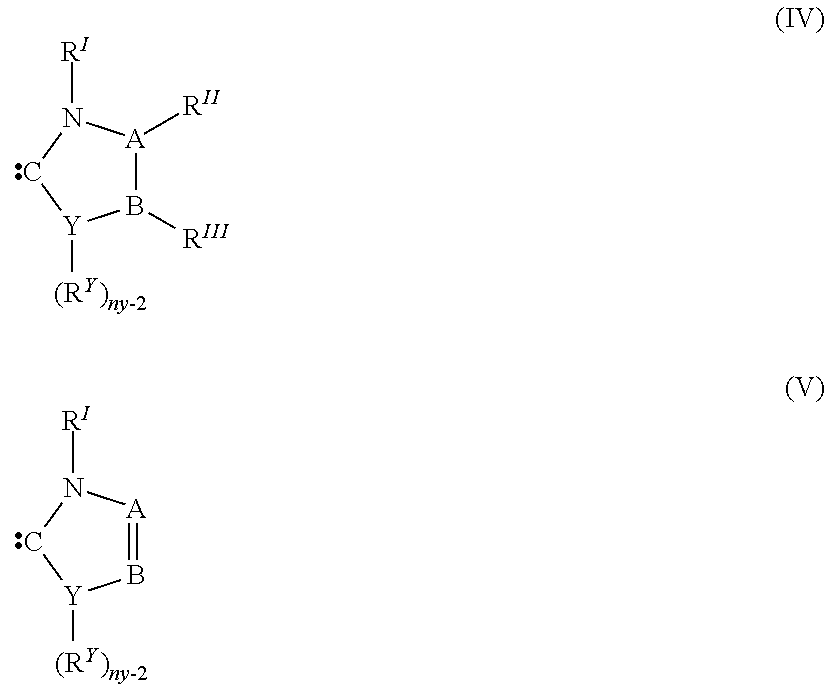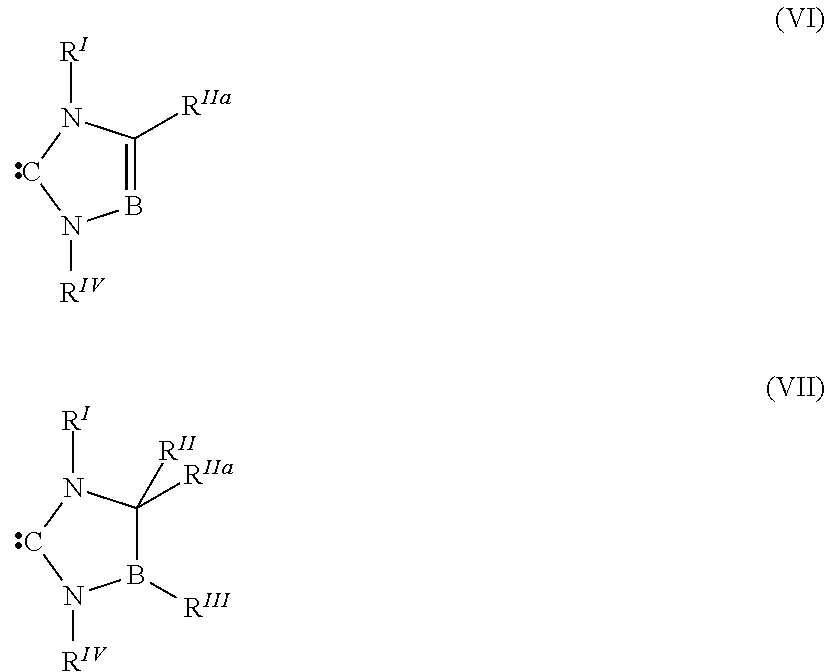Curable polysiloxane coating composition
a polysiloxane and coating composition technology, applied in the direction of coatings, transportation and packaging, layered products, etc., can solve the problems of difficult to obtain the good balance between these properties, slow or incomplete cure, and difficult to process materials without risking premature gelation, etc., to achieve fast cure upon drying, stable solution, and efficient processing
- Summary
- Abstract
- Description
- Claims
- Application Information
AI Technical Summary
Benefits of technology
Problems solved by technology
Method used
Image
Examples
example 1
[0131]A sample (Example 1A) was prepared by mixing 0.10 g 5MeO-TPT (prepared essentially as described above), 3.4 g MEK, 13.5 g Heptane, 0.20 g Syl-Off™ 7048, and 7.81 g Syl-Off™ 2792 in a glass vial. The vial was capped and set aside. The next day a portion of the resulting mixture was poured into a glass Petri dish and baked for over 2 hours at 80° C.
[0132]A second sample (Example 1B) was prepared by mixing 0.10 g 5MeO-TPT (prepared essentially as described above), 3.4 g MEK, 13.5 g Heptane, 0.20 g Syl-Off™ 7048, and 7.81 g Syl-Off™ 2792 in a second glass vial. A portion of the resulting mixture was poured into a glass Petri dish and baked for over 2 hours at 80° C.
[0133]Each baked sample was then swollen in deuterated chloroform with CrAcAc added as a relaxation agent, and 29Si NMR spectra were acquired. For both samples, resonances were observed at about −22 ppm (main chain D-group), −36 ppm (Si—H functionality), and −65 ppm (T-group cross-link). No resonance was observed at −12...
example 2
[0134]Approximately 7.0 g of Syl-Off™ 292 (a 30 weight percent solids dispersion of a blend of reactive hydroxysilyl-functional siloxane polymer(s) (said to comprise hydroxyl-terminated polydimethylsiloxane) and hydrosilyl-functional polysiloxane crosslinker (said to comprise poly(methyl)(hydrogen)siloxane) in xylene (a premium release coating composition obtained from Dow Corning Corporation, Midland, Mich., under the trade designation Syl-Off™ 292) was weighed into a Schlenk flask. 7.0 g of Syl-Off™ 292 contains about 2.1 g of the above-mentioned polymer blend. The polymer dispersion was degassed under vacuum for approximately 30-60 seconds and then transferred to a glove box under inert (nitrogen gas) conditions. Approximately 30 mg of a stable carbene (1,3,4-triphenyl-4,5-dihydroimidazol-2-ylidene) was weighed out in a vial to provide about 1.5 weight percent carbene catalyst to polymer solids. The polymer dispersion was poured into the vial and mixed with a glass rod. After mix...
example 3
[0136]A mixture of 0.10 g 5MeO-TPT (prepared essentially as described above), 3.4 g MEK, 13.5 g Heptane, 0.20 g Syl-Off™ 7048, and 7.81 g Syl-Off™ 2792 was prepared in an 11 dram glass vial. The mixture was coated on the primed side of a 50 micrometer thick polyester terephthalate (PET) film (obtained from Mitsubishi Polyester Film, Greer, S.C., under the trade designation Hostaphan™ 3 SAB, referred to hereinafter as 3 SAB PET film, which has one side chemically treated or primed to improve the adhesion of silicone coatings) using a number 4 Meyer rod. The resulting coated film was then placed in an oven and cured at 80° C. for 2 minutes. The resulting coating was cured well and could not be scuffed off with finger pressure. The coating was found to contain 8.8 percent extractable silicone by the methods described above.
[0137]Samples of the cured coated film were tested for release liner adhesion and subsequent adhesion (readhesion) using the methods and adhesive tapes described abo...
PUM
| Property | Measurement | Unit |
|---|---|---|
| temperatures | aaaaa | aaaaa |
| temperatures | aaaaa | aaaaa |
| temperature | aaaaa | aaaaa |
Abstract
Description
Claims
Application Information
 Login to View More
Login to View More - R&D
- Intellectual Property
- Life Sciences
- Materials
- Tech Scout
- Unparalleled Data Quality
- Higher Quality Content
- 60% Fewer Hallucinations
Browse by: Latest US Patents, China's latest patents, Technical Efficacy Thesaurus, Application Domain, Technology Topic, Popular Technical Reports.
© 2025 PatSnap. All rights reserved.Legal|Privacy policy|Modern Slavery Act Transparency Statement|Sitemap|About US| Contact US: help@patsnap.com



